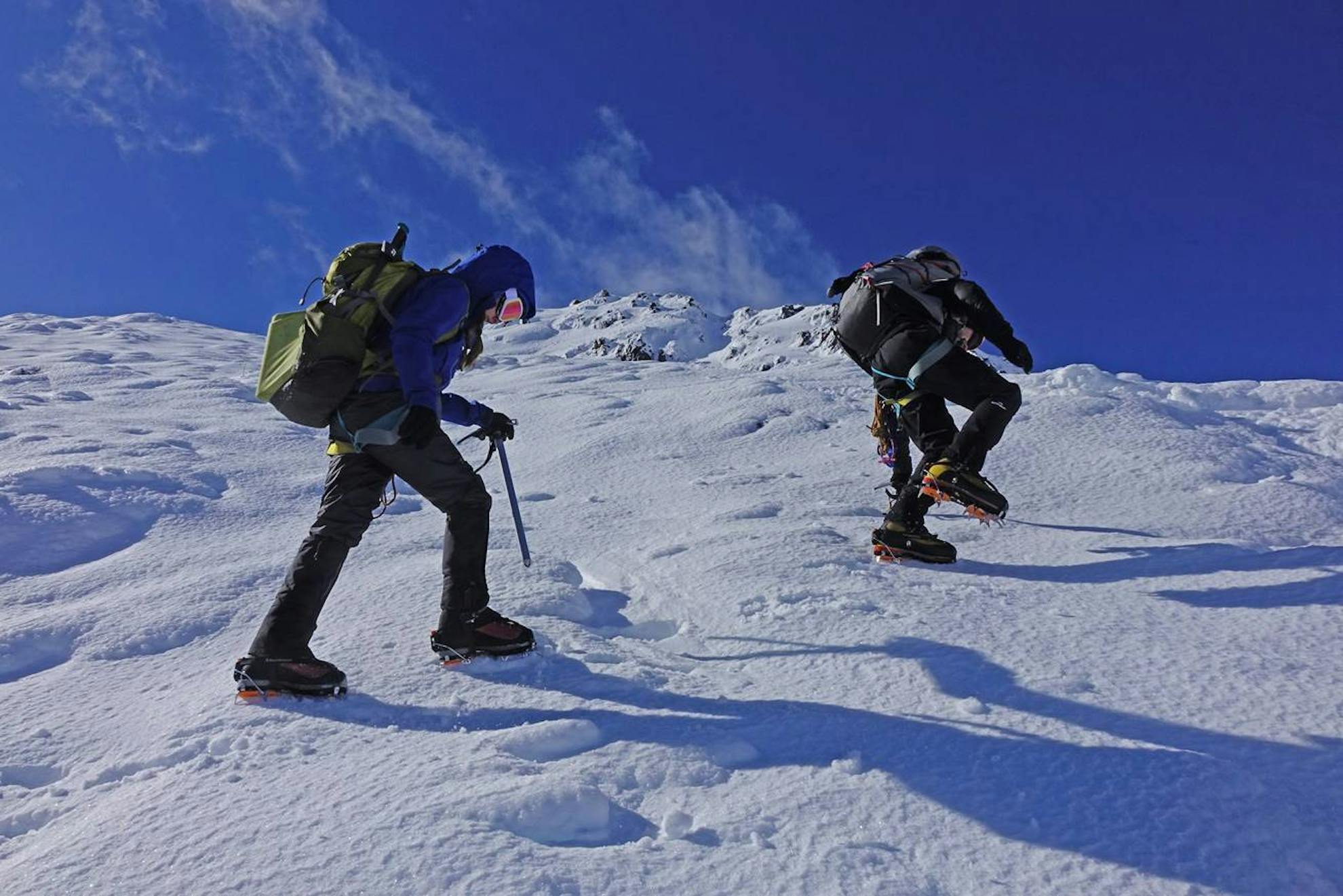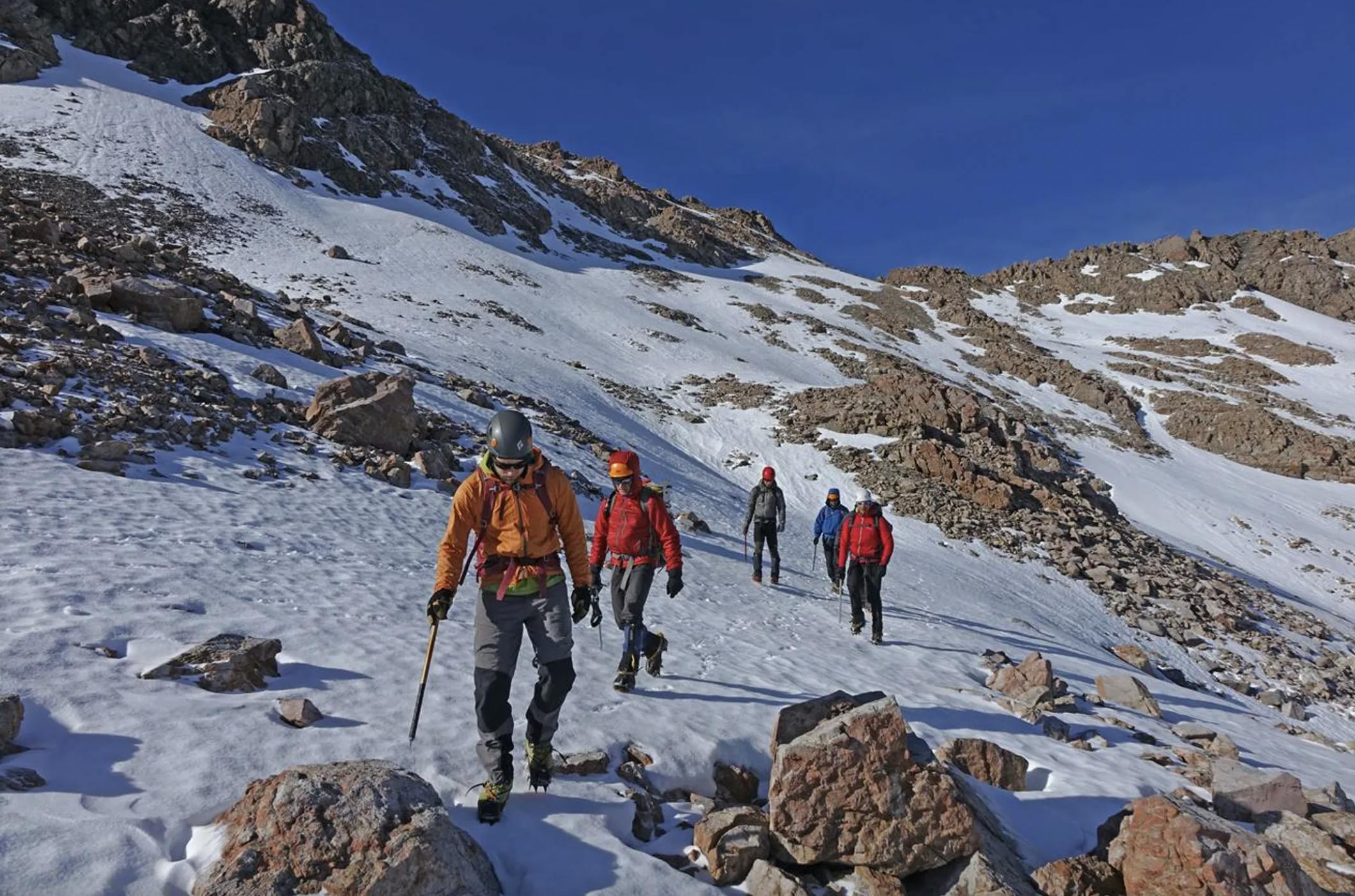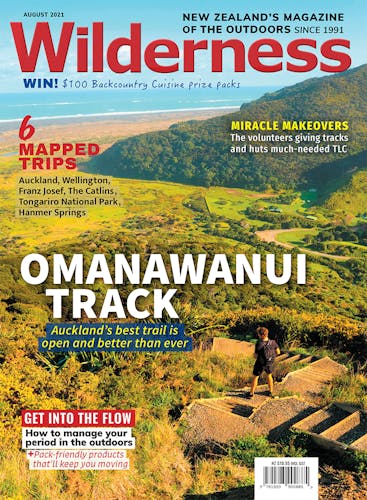Staying safe in the mountains during winter means staying on your feet and avoiding a slide at all costs
The chunks of ice underneath me were slowly turning red and pink from the blood dribbling from my face. I was 18 and I had experienced my first error in footwork on an icy Taranaki Mounga.
Seconds earlier, my crampons just bounced off the 40-degree slope and I was on my way. The acceleration without friction was frightening.
I had immediately rolled into the self-arrest position and with exacting technique tried to gain purchase with the pick under my shoulder.
The ice rejected the pick and the adze bounced into my face several times. Out of desperation, I rolled over and saw a big rock. I pushed myself over to target it, feet up bracing for impact. Chunks of ice flew everywhere and I came to a halt, my crampon points only a couple of centimetres from the boulder.
I had landed in a big pile of ice that had fallen down the valley and collected in front of the boulder, effectively cushioning my 100m slide. I had survived, but, 45 years later, the memory of that fall is still clear in my mind.
I have spent the last 40 years teaching others how to avoid a similar incident and have, while on mountain rescue duties, had to retrieve the bodies of those when they had failed.
Self-arrest or slip-arrest
The technique to stop a slide down snow is usually a key activity incorporated into basic snow craft lessons. People often ask me about becoming an ‘expert’ at self-arrest. I always respond by saying it’s better to become an expert at staying on your feet so you never need to self-arrest.
However, knowing some good basics of what to do if a slide occurs is an important skill to have when moving around a mountain’s ‘middle terrain’ – flat to 35-degree slopes. This terrain covers most of the mountain areas around the world and these slopes can lead to steeper terrain, rocks, surface hazards and even crevasses.
The standard prone ice axe self-arrest works well on medium-density snow with the body over the axe driving in with the shoulder above the adze to get the pick to bite into the snow.
Unfortunately, it has been discovered that with the extremes of soft and hard snow surfaces, the standard self-arrest can have low efficiency or not work at all.
The modern approach is to do everything you can to regain security – regain your feet and balance before starting a slide. This is called ‘reset’ or ‘slip-arrest’.
For those experiencing a slip, the idea is to do their absolute best to regain security and balance and not allow a slide to start.
Tips for slide arrest
If you can’t control a slip and end up in a slide, you’ll have to try to self-arrest. Here’s how:
- Get your head uphill: You can’t execute an arrest while upside down. This also ensures your head is protected – even a minor head knock may stop you from arresting.
- Try to stop quickly: The quicker you can get your pick into the snow, the better your chance of stopping the slide and avoiding injury. Bunch your body and be aggressive.
- When stopped, ensure your security: Statistics show that people don’t survive a second slide after initially stopping. Before removing the pick from the snow, ensure you can get security with your feet by kicking steps aggressively.
- Practise: When skill training, select a slope that slides (30 to 35-degrees). Check the slope for hidden hazards such as rocks and holes, and ensure the run-out is adequate if someone can’t stop.
- Never wear crampons while training: Crampons can cause severe leg injuries if they plunge into the snow. Also avoid practising a slide on icy or rough surfaces. Wear a helmet, gloves, and full skin cover.
- Get help: Safety must be managed and the most efficient way of learning is to arrest a slide and it’s best to learn this skill from a professional instructor or experienced climbers
Tips for slip arrest
Taking quick action and planning ahead arethe best steps to avoiding self-arrest.
- Measure your underfoot surface type, make sure you apply relevant skills and get your crampons on early – when it’s white, put them on.
- Consider a change of route that would be less demanding or add insurance with a rope and anchors.
- Watch for surface changes that can occur with changing temperature and cloud effects, even on slopes you have already travelled.
- Be prepared to react quickly to prevent a slip becoming a slide.

Crossing slippery terrain
If you find yourself having to attempt a self-arrest, it means all other efforts to stay on your feet or to prevent sliding have failed.
The best thing you can do to prevent a slide is to concentrate on maintaining good footwork on the mountainside. On snow, set yourself up for success by wearing mountaineering boots with well-fitted crampons and carry the ice axe in the uphill hand with the pick facing backwards. The best way to carry a helmet is on your head.
Don’t stand or travel with both feet on the same contour as this is a poor balance stance, and use your ice axe as a point of balance.
At all times be aware of the nature of the surface and check your footing and balance. If your boots are not making a good impression in the snow or only crampon points are penetrating, this is a ‘no fall’ situation.
The easiest and worst thing you can do when wearing crampons is to trip yourself up – good focus on footwork is required to avoid this.
If you want to look at the scenery, stop and then look. Don’t let your focus drift from terrain and footwork while you are moving.
Preventing a slide with a slip-arrest
A simple stumble that is not corrected can result in a slide down a mountainside.
As you travel across the snow, note its consistency as this will dictate your response should you slip or stumble.
With a trip or slip in medium or soft snow, the ice axe can usually be used to arrest the slip by vigorously plunging the shaft/spike directly into the snow and gripping it firmly until your feet have regained purchase.
On very hard or icy snow, this technique will be ineffective. Instead, direct the pick at the snow and drive it hard into the surface of the snow using arms and upper body.
In some situations, a rapid swing of the pick into the snow with a hand down the shaft may be the only way to prevent a slide.
Stronger and more confident people may assume the ‘frog jump’ by doing a quick spring, lifting both feet and resetting them parallel to the slope facing downhill. It’s important to use your axe for balance and compress your knees over your feet when doing this manoeuvre, and it can be repeated a number of times until security is regained.
The ‘frog jump’ can be used on virtually any snow to regain purchase and balance.
Environment
Any mountainside where a melt and freeze of the snow has occurred will always have frozen slippery surfaces first thing in the morning and in shaded gullies and slopes. Your judgement should always be on how the surface presents and it does not have to be high altitude; it could even be your first steps outside a hut in the tussock.
North Island mountains get extraordinary frozen surfaces, direct from the maritime climate blowing moisture-laden air onto the lofty volcanoes. This incoming moisture is extremely threatening and can form rime ice over all surfaces, even in subalpine zones where scree and plant-covered slopes can become frozen.
Be wary of a thin snow cover over icy surfaces; while the appearance is of a soft surface, the sliding layer is just underneath and can be very hard.
– Chris Prudden is NZOIA Alpine guide/instructor








